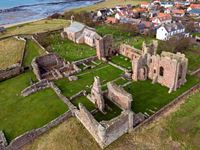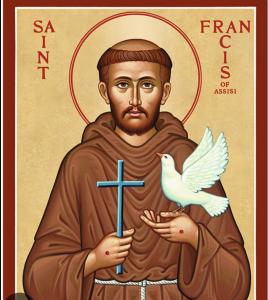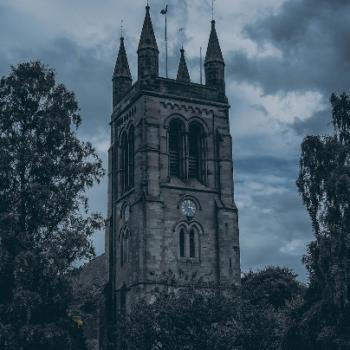
- Trending:
- Pope Leo Xiv
- |
- Israel
- |
- Trump
- |
- Social Justice
- |
- Peace
- |
- Love
The 100 Most Holy Places On Earth
The Holy Island





Also Known As:
Lindisfarne/ Medcaut/ Medicata Insula
Associated Faiths:
Church of England
Originally associated with Celtic Christianity, and perceivably a “sacred space” for any in the Christian tradition—though formally Anglicanism
Accessibility:
Open to visitors.
Annual visitors: 650,000
History
Historically speaking, the 1,000-acre island of Lindisfarne—most often known today as “The Holy Island of Lindisfarne”—is first mentioned in extant records in the 6th century AD. It was an early center of Celtic Christianity and is believed to have been founded by a handful of early Celtic Saints—most notably, Saint Aidan (d. AD 651). Aidan of Lindisfarne was an Irish missionary and monastic who came to the island to proselytize. He is said to have converted to Christianity those inhabiting the island (and those living throughout Northumbria). He established a priory on Lindisfarne and became the first bishop of the region. Often called the “Apostle of Northumbria,” his status as a saint is acknowledge by the three major High-Church traditions—Roman Catholicism, Eastern Orthodoxy, and the Church of England (or Anglican Communion).
In circa AD 634, Aidan founded a monastery on the island, and had a priory to house the monks later in that same year. Aidan remained there until his passing (in AD 651). A wooden structure—a church—was constructed, which served as the seat of the Northumbria bishop. However, that building later had its thatch roof removed—and the walls and roof were covered in lead.
On June 8, AD 793, Vikings raided Lindisfarne. At that time, many of the monks who dwelt on the island were either murdered or enslaved. In AD 873, a Danish army ravished Northumbria—and those left on the “Holy Island” had to flee for their lives (taking with them the bones of Saint Cuthbert, who had been buried there). It would be more than 200 years before the priory would function again, and monks would return to their home on Lindisfarne. Today, there are visible remains which date from the era of Aiden—and a stone parish church is built on the site of the island’s original wooden structure.
While the Celtic Christian tradition was the prominent faith on the island after Saint Aidan introduced Christianity there, it did not last. In the last quarter of the 7th century its allegiance turned to Rome. However, in 1536, Henry VIII squelched the work of the Benedictine monastics on the island, and in 1613 ownership of the island and its properties—including its church and associated resources—were taken over by the British monarch. Consequently, today it is run by the Church of England, rather than the Roman Catholic tradition.
Religious Significance
As with any Christian church, the stone chapel on Lindisfarne is “sacred” for the rites performed therein—and as a monument to the God whom its parishioners worship. Its two sacramental and redemptive rites, and its five non-salvific ordinances, hallow the ground, making it a “sacred space” for the worshiper who wishes to connect to and commune with the divine.
Because of its connection with Celtic Christianity, the island’s original name was apparently “Medicata Insula” (or the “Healing Island”). While historians are not 100 percent certain if this is due to the “medicinal herbs” found on the island, or because Saint Aidan is said to have spiritually “healed” the islands’ residents of their pagan beliefs, the latter is the preferred tradition. Lindisfarne was the seat of Christian evangelism in Northern England, and the location from which missionaries left to convert the masses to the Gospel of Jesus Christ. Thus, it stands as a monument to the spread of Christianity throughout England—and to those who were instrumental in bringing to pass that event. Indeed, the “Holy Island” is aptly named, since believing Christians cannot help but perceive as “holy” the introduction and spread of the Christian faith throughout the land.
As the home of no less than three saints (Saints Aidan, Cuthbert, Eadfrith, and Eadberh), Lindisfarne’s 1,000 acres are unique. Perhaps no plot so small has produced so many saints in the history of the Christian tradition. And, as is common in the High-Church traditions, where the saints have walked, the spaced is sacred—and the “Holy Island” is no exception to this rule.
While today officially associated with the Church of England, Lindisfarne has a place of significance for at least three traditions. For Celtic Christianity in its various forms (mostly present in Ireland, but in the form of independent congregations as well), the “Holy Island” is a monument to their history—and how Christianity was introduced in to England via their tradition. For Roman Catholics, Lindisfarne is a reminder of how Roman Catholicism suffered greatly (in England) during the Protestant Reformation; and how Catholics were viciously persecuted under Henry VIII and his daughter, Elizabeth. For those affiliated with the Church of England, this “sacred site” is a monument to that tradition’s history and influence in England, in addition to it being the current source of the sacraments for Christians in that region. Thus, as unknown as Lindisfarne may be to many, its history is rich, its influence has been broad, and its impact has been nothing shy of elevating and sacral.








